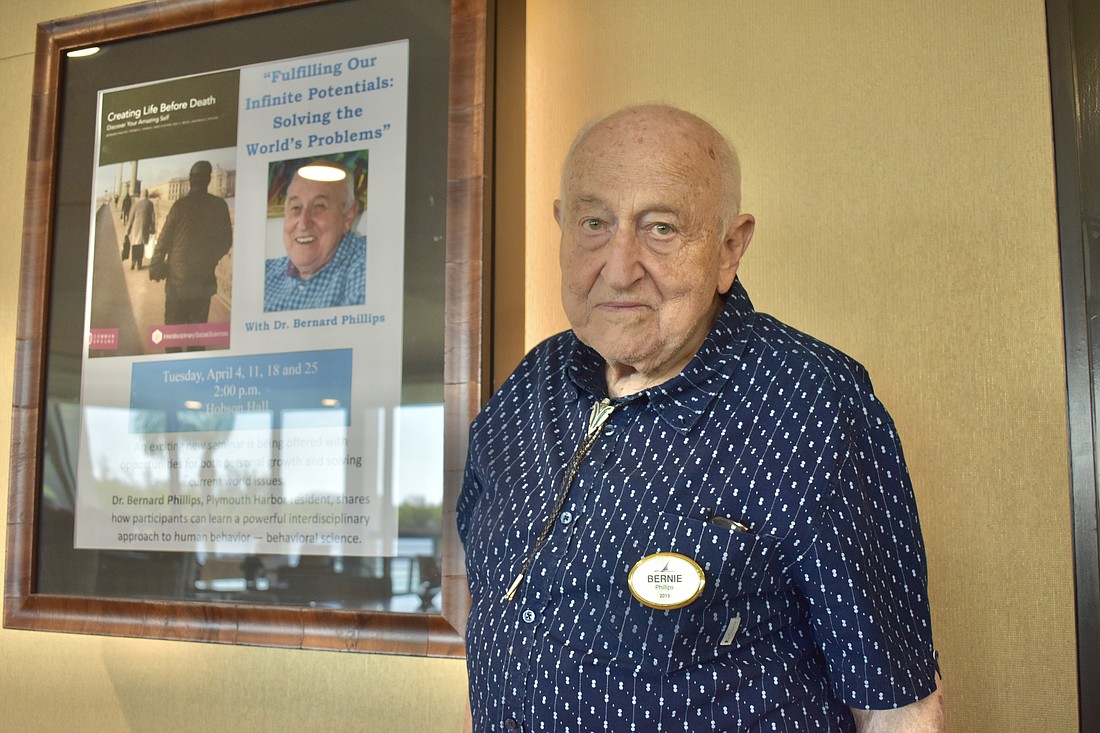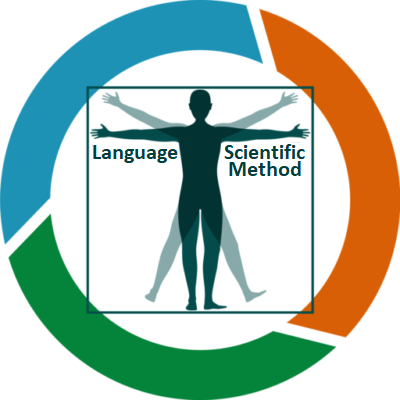
Are You Prepared to Change Your Life?
Are You Ready to Change Our World?
INTRODUCTION
The very survival of the human race is at stake in contemporary times, given the possibilities of nuclear warfare and climate change. As a result of the growing power of computers, a new threat has also emerged: AI, or Artificial Intelligence.
The power of computers was demonstrated in May of 1997, when IBM’s “Deep Blue,” able to analyze 200 million chess positions per second, beat the current world chess champion. A more challenging demonstration took place in February, 2011, when the computer Watson, in the game of Jeopardy, trounced two of the most successful players of the game.
Currently, applications of Artificial Intelligence have been limited to highly specialized tasks, such as facial recognition. Yet a great many experts in this area believe that super intelligent machines which can re-program themselves for continuing improvement will be developed in the not too distant future. And they are convinced that this further development of AI poses a threat to human survival no less than nuclear warfare or climate change.
Yet all of the threats to human existence fail to take into account the further development of human intelligence. The foregoing chapters pointed exactly in this direction by contrasting a bureaucratic with an evolutionary way of life. Indeed, we might see the latter societies as fostering nothing less than super intelligent human beings with the ability to solve our threatening problems.
Thomas Kuhn’s The Structure of Scientific Revolutions (1962) developed an analysis that can point exactly in this direction. He documented the necessity of changing the “paradigm” within a given science, or its absolutely fundamental assumptions, in order to achieve a scientific revolution. He illustrated this by the change from Newton’s to Einstein’s theories.
We can extend Kuhn’s idea to changing the paradigm embodied by society as a whole, such as moving from bureaucratic toward evolutionary assumptions with respect to hierarchy, specialization, and conformity. The result can be our envisioning a cultural, as distinct from a scientific, revolution.
What we’re proposing and accomplishing here is becoming more systematic about our previous discussions with respect to changing our way of life by adding the results of Kuhn’s research. In this final chapter we shall move even further in this systematic direction as we point toward achieving an evolutionary way of life.
We have developed a 12-step program that addresses the problem of our deep addiction to a bureaucratic way of life. It is quite different from the 12-step program of Alcoholics Anonymous. They are similar only in that both have to do with addiction, and that both involve 12 steps.
Our own program integrates key scientific findings presented in the foregoing chapters. They may be best organized around the Japanese proverb you might recall: “Vision without action is a daydream; action without vision is a nightmare.” The first six steps center on vision, with the last six focusing on action
Further, each pair of steps follows the basic approach of the scientific method. For example, step 1 points toward a problematic situation, with step 2 indicating a solution.
As we proceed with each step, we shall simply cite several examples of the basic ideas discussed in the book with their page numbers.
VISION
Step 1.
Gain awareness of your conforming to a bureaucratic way of life centering on hierarchy (“head”), narrow specialization (“heart”), and conformity (“hand”).
*Tom Savage’s Sunday school experience of bureaucracy at age 7 (pp. 3-4),
*Specialized information by the CIA, FBI, State Department and FBI of the impending 9/11 catastrophe was not shared (p. 7).
*The failure of NASA employees to emphasize the O-ring problem to management, based on limited communications up their hierarchy, was largely responsible for the explosion of the space shuttle Challenger (p. 7),
Step 2.
Envision an evolutionary way of life centered on equality (“head”), broad understanding (“heart”), and actions for personal development (“hand”).
*Tom Savage’s reaction to his Sunday school teacher, including the questioning of his authority, not accepting the simplicity of the biblical story, and daring to stand up and face up to being kicked out of Sunday school (p. 4).
*Biologically, following Stephen Jay Gould, humans are “learning animals.” We are the only organisms throughout the entire known universe with the capacity to continue to evolve, based in part on our complex languages, within our own lifetimes (p. 12).
*Physically, following the interactive nature of the entire universe along our languages, we are the most interactive entities throughout the known universe (pp. 15-16). By contrast with a see-saw that depicts bureaucracy, we can envision a stairway with steps wide enough for the entire human race. It does not narrow as it moves upward infinitely, and it includes horizontal paths to create interaction among people in the many specialized areas (pp. 39-40).
Step 3.
Develop awareness of your addiction to a static and dichotomous orientation, following the nature of almost all language.
*Following Alfred Korzybski, the Polish engineer who founded General Semantics and wrote Science and Sanity (1933), we are all very deeply addicted to an either-or static or dichotomous way of thinking, by contrast with a dynamic and gradational orientation pointing toward human development (p. 46).
*Samuel Hayakawa, a former Senator from California, wrote Language in Thought and Action (1949), furthering Korzybski’s ideas. He saw all language on a ladder of linguistic abstraction taking one from concrete phenomena like “cow” to abstract entities like “the human race.” Staying on one rung of that ladder reinforces a static and dichotomous orientation (p. 46).
*Jack Levin’s doctoral dissertation under Phillips at Boston University replicated many social science studies by finding that the results of severe frustration was aggression, as illustrated by increased prejudice against a minority group. He learned that this occurred only among those of his student subjects who were outward oriented, following the nature of addiction. They compared their grades to the grades of other students, or to the class average (pp. 114-116).
Step 4.
Move toward a gradational orientation, following the scientific method’s number system, and its unlimited potential.
*Korzybski had some success in teaching his students a gradational approach. This is illustrated by the emergence of the journal ETC, devoted to developing general semantics (p. 46).
*Hayakawa found that by moving up and down the ladder of linguistic abstraction not only illustrates a gradational orientation but also enables one to take into account an increasing range of knowledge (p. 46). C. Wright Mills, in his famous book, The Sociological Imagination (1959/2000), stated: “The capacity to shuttle between levels of abstraction, with ease and with clarity, is a signal mark of the imaginative and systematic thinker” (p. 34 of his book).
*By contrast with the outward-oriented students in Levin’s experiment, a minority of the students were less outward oriented, for they compared their grades with their own previous grades. Lo and behold, they didn’t increase prejudice against a minority group when they were deeply frustrated (pp. 114-16).
Step 5.
Achieve awareness of your victimization by the revolution of rising expectations and your increasing aspirations-fulfillment gap.
For the Buddha, the central problem of the human race is one’s negative feelings tied to the gap between one’s wants and actual achievements. This aspirations-fulfillment gap is his First Noble Truth (p. 67). Emile Durkheim wrote about this same gap in his book, Suicide (1897), at a time when the industrial revolution was gathering speed: “From top to bottom of the ladder, greed is aroused without knowing where to find ultimate foothold. Nothing can calm it, since its goal is far beyond all it can attain” (p. 69).
In his book with Louis C. Johnston, The Invisible Crisis of Contemporary Society (2007), Phillips concluded: “The gap between aspirations and their fulfillment is in fact increasing in contemporary society.” This is very largely a result of what Harlan Cleveland called ”a revolution of rising expectations” accompanying the industrial revolution ( p. 69).
In Value-Free Science? Ideals and Illusions (2007), Harold Kincaid and eleven other philosophers of social science documented the misleading and often harmful idea of “value neutrality” that continues to dominate scientific research. There is absolutely no way that scientists can somehow expunge their own basic goals from having an impact on their research. Kincaid and his colleagues free researchers to include their feelings, such as happiness, within the research process. (p. 88).
Step 6.
Follow the East-West Strategy to close that gap, and then continue to increase your aspirations and their fulfillment with the aid of an interdisciplinary scientific method.
Following the conclusions of the psychologist George A. Kelly in his A Theory of Personality (1963), “Might not the individual man [and woman] . . . assume more of the stature of a scientist, ever seeking to predict and control the course of events with which he is involved? Would he not have his theories, test his hypotheses, and weight his experimental evidence?” (p. 14).
The East-West strategy begins with the Buddha’s Eastern strategy of lowering one’s unrealistic aspirations until they become realistic. Then one continues to raise both aspirations and their fulfillment in tandem, given that one can make use of the powerful scientific method developed in Western society (pp. 84, 86, 88).
Following the analysis of the idea of value neutrality by Kincaid and his colleagues, it is important for scientists to assess the impact of their values on their research. That assessment of “investigator effects,” which adds to the validity of their research, follows Alvin W. Gouldner’s call for a “reflexive sociology” in his The Coming Crisis of Western Sociology (1970) (p. 44).
ACTION
Step 7,
Use Turner’s Law of Negative Emotional Energy to gain awareness of your receiving negative sanctions from yourself and others for your failure to fulfill your expectations (p. 93).
Retain awareness of your vision, which includes Steps 1-6: bureaucratic conformity, challenging authority, addiction, scientific method, victimization, and closing gap.
Use your vision to help you gain awareness of your encounters of negative sanctions from yourself.
Use your vision to help you gain awareness of your encounters of negative sanctions from others.
Step 8.
Transform those negatives into positives by turning them into learning experiences with the aid of your vision, making lemons into lemonade.
Retain awareness of your vision, which includes Steps 1-6.
Use your vision to transform those negative sanctions from yourself into learning experiences that then become positive reinforcements.
Use your vision to transform those negative sanctions from others into learning experiences that then become positive reinforcements.
Step 9.
Use Turner’s Law of Positive Emotional Energy to gain awareness of your receiving positive sanctions from yourself and others for fulfilling your expectations (p. 930.
Retain awareness of your vision, which includes Steps 1-6.
Use your vision to transform those positive sanctions from yourself into learning to make progress on personal evolution.
Use your vision to transform those positive sanctions from others into learning to make progress on personal evolution
Step 10.
Learn to see your mundane procedures for achieving positive emotional energy as part of your vision of a 12-step program for personal evolution.
Retain awareness of your vision, which includes Steps 1-6.
Use your vision to transform those positive sanctions from yourself into learning to make progress on world problems.
Use your vision to transform those positive sanctions from others into learning to make progress on world problems.
Step 11.
Gain awareness that your everyday habits point you in a bureaucratic direction.
Retain awareness of your vision, which includes Steps 1-6.
Use your vision to gain awareness of the existence of your everyday habits that point you in a bureaucratic direction.
Use your vision to transform your awareness of the existence of your bureaucratic habits into learning experiences that then become positive reinforcements.
Step 12.
Develop evolutionary habits that include an evolutionary self-image, based on commitment to the entire 12-step program.
Retain awareness of your vision, which includes Steps 1-6.
Retain awareness of your actions, which include Steps 7-11.
Use your vision and actions to develop an evolutionary self-image, illustrating EI or Evolutionary Intelligence which points toward continuing evolution.
IMAGE OF THE FUTURE
Given the enormous complexity of human behavior, the many huge problems that presently exist, and our deep addiction to a bureaucratic way of life, I will not make specific predictions about how our many institutions will change over time.
But I will claim that the above 12 steps are the basis for a cultural revolution that will, over time, move us away from our bureaucratic way of life and toward an evolutionary pattern of behavior. For those steps include a vision that will fulfill our present extraordinary potentials. We now have the knowledge for achieving this nonviolent change in societies that the students of the 1960s did not have in their revolt against bureaucracy.
The 12 steps will yield nothing less than evolutionary self-images among those seeking a direction for solving our threatening world problems along with their own personal problems. As a result of their demonstrating such new abilities, they will encourage more and more and more people to follow their lead, yielding an accelerating process.
Initially they will of necessity focus on addressing those problems that threaten human existence, such as nuclear warfare and climate change. For example, the Levin experiment opens a road map for reducing our many kinds of aggression, including war. The experiences of kaizen in Japan that totally transformed the economy, paralleling the European Marshall Plan, can be carried much further with the aid of this 12-step program.
Knowledge of physical, biological, social and personality structures clearly shows that the human being is the jewel of the universe. My own understanding is that the human race will not only survive, but will go on to achieve a future that will exceed our wildest dreams.
The following is a vision that I developed in my co-authored Revolution in the Social Sciences (2012):
There will be a future for our children, our grandchildren, our great-grandchildren, and their great-grandchildren.
One day we will all learn to see ourselves as children who are only just beginning to understand ourselves and our world, and we will also learn to dream about our infinite possibilities and move toward those visions one step at a time.
One day we will all learn to pay close attention to the accomplishments of all peoples throughout history as well as to our own personal accomplishments, and we will also pay close attention to the failures of the human race and to our own personal failures.
One day we will be able to bring to the surface and reduce our stratified emotions like fear, shame, guilt, hate, envy, and greed, and we will learn to express ever more our evolutionary emotions like confidence, enthusiasm, happiness, joy, love, and empathy.
One day we will see peace on earth and fellowship among all humans.
One day we will no longer look down on any other human being.
One day we all will learn to be poets, philosophers, and scientists.
The first six chapters of Creating Life Before Death
(to access the book click the link)
in Parts 1, 2 and 3 presented the interdisciplinary knowledge of human behavior that is essential for unlimited human evolution. This final chapter presents a 12-step program anyone can employ, based on key elements of that knowledge, to actually embark on an unlimited evolutionary journey. By contrast with AI, or Artificial Intelligence, we can all develop EI, or Evolutionary Intelligence. As a result, our EI will not only trump AI, and not only enable us to solve the problems threatening our very existence. Our Evolutionary Intelligence will enable us to create a future that will exceed our wildest dreams.
Part 4: From Existential Threats toward Solutions
Chapter 7: Developing EI (Evolutionary Intelligence)
PLYMOUTH HARBOUR SEMINAR
E.I. (Evolutionary Intelligence)
Applying an Interdisciplinary Science of Human Behavior
2023
June 2023 Session
E.I. (Evolutionary Intelligence)
Applying an Interdisciplinary Science of Human Behavior
PLYMOUTH HARBOUR SEMINAR
FULFILLING OUR INFINITE POTENTIALS:
SOLVING THE WORLD PROBLEMS
APRIL 2023
Session 1
The title of this four-session seminar says it all: “Fulfilling Our Infinite Potentials: Solving the World’s Problems.” Yes, every single one of us is blessed with unbelievable strengths that are imprisoned by our bureaucratic way of life. And yes, we can learn to escape from our prisons and employ those incredible powers to help solve the full range of world problems, some of which threaten our very survival. The key that will open that door is the integration of the highly specialized knowledge of human behavior that presently exists throughout the social sciences. This will yield the basis for a new social movement centering on the infinite empowerment of ever more individuals throughout the world.
Session 2
Our textbook, Creating Life Before Death: Discover Your Amazing Self, coupled with our website, behavioral-scientists.com, can provide the basis for learning to pull together the valuable bits and pieces of knowledge of human behavior scattered throughout the academic world.
Session 3
The importance of emotions in shaping our behavior is well illustrated by the role of music, art, film and television in our lives. Yet emotions are ruled out of academic research on human behavior because they supposedly get in the way of scientific knowledge. By contrast, we see our emotions as potentially yielding a vision of our infinite powers not only to enjoy life but also to help solve the problems of the human race. It is when we combine that vision with integrated knowledge of human behavior that we achieve the empowerment we all desperately require to change the destructive aspects of our present way of life.
Session 4.
This session summarizes the entire Seminar
Following an ancient Japanese proverb, “Vision without action is a daydream,” just as “Action without vision is a nightmare.” Our vision of the infinite empowerment of the individual is absolutely essential,
but action is no less important. Lord Acton, a British historian, wrote: “Power tends to corrupt, and absolute power corrupts absolutely.” That is all too true within our bureaucratic way of life. But we can understand the importance of combining vision and action within an evolutionary way of life: “Power tends to empower, and absolute power empowers infinitely.” When we succeed in developing the habit of combining interdisciplinary knowledge with the vision of personal and world evolution, no power on earth can get in the way of our movement.
THE CHANGE STARTS WITHIN
(The Observer article by Ian Swaby April 30, 2023
For the second year in a row, Phillips is offering a series of four weekly lectures at Plymouth Harbor’s Hobson Hall auditorium. The lectures series is called “Fulfilling Our Infinite Potentials: Solving the World’s Problems” and is based on a book that he co-authored, “Creating Life Before Death: Discover Your Amazing Self.”
Proposal for a new Section of the American Sociological Association.
Paradigmatic Sociology
.
.
My purpose is nothing less than moving toward fulfilling Auguste Comte’s dream of a powerful science of sociology that can help societies solve their present-day highly threatening problems.
Thomas S. Kuhn’s The Structure of Scientific Revolutions explained the necessity of changing the paradigm, or absolutely fundamental assumptions, within a given science in order to achieve a scientific revolution, illustrated by the change from Newtonian to Einsteinian physics.
We sociologists can achieve much the same results by (1) becoming aware of the existence of our bureaucratic paradigm, with its focus on persisting hierarchy, narrow unintegrated specialization, and personal conformity, (2) working toward developing a vision of an alternative paradigm which opens up to the incredible potentials of the individual and society, and (3) demonstrating the actions required to fulfill that vision.
To the extent that sociology’s Sections presently embody a bureaucratic paradigm, I’m convinced that they will achieve their goals to an increasing extent by learning to move toward an alternative paradigm, such as an evolutionary one. This will be facilitated by interaction between members of the new Section and members of other Sections. Members of those Sections which have addressed in part the importance of paradigmatic change can speed this process along.
My own academic background, which has moved progressively in this direction, can serve to illustrate the nature of such a paradigmatic change.
As an undergraduate pre-medical student at Columbia, I changed to sociology after contact with C. Wright Mills and his commitment to working toward solving society’s problems with an exceedingly broad approach to sociology, by contrast with narrow specialization. Later, reading his The Sociological Imagination, I became convinced of the immense potential powers of the ordinary individual. My co-founding the Section on Sociological Practice pointed up the importance of action.
The textbooks I wrote in introductory sociology and in research methods gave me the intellectual background that Mills had pointed toward. That background was
extended by my editing book series on the sociological imagination for Aldine de Gruyter as well as Paradigm Publishers. The dissertation of my doctoral student, Andy Plotkin, pointed me in the right direction: “Toward the Measurement of Paradigms.”
This was followed by my co-founding the Sociological Imagination Group in 2000, initially based on my book, Beyond Sociology’s Tower of Babel: Reconstructing the Scientific Method. Over the next eight years our annual research conferences, joint with the meetings of the American Sociological Association, yielded three volumes (Toward a Sociological Imagination, Understanding Terrorism, and Bureaucratic Culture and Escalating World Problems) containing 30 articles.
The four books I published afterwards (The Invisible Crisis of Contemporary Society, Armageddon or Evolution?, Saving Society: Breaking Out of Our Bureaucratic Way of Life, and Revolution in the Social Sciences) all pointed toward an alternative paradigm for society. That worldview was explained more fully in Creating Life Before Death (2020), followed by two invited essays in Contemporary Sociology and my seminar on behavioral-scientists.com.
Currently there is interest in paradigms throughout the academic world, as illustrated by the following books: The Illusion of Knowledge: The Paradigm Shift in Aging Research, Paradigm Shifting: Guiding Evolution from the Inside, The Golden Paradigm, Love, Stars, and Paradigms, Paradigms: The Business, Paradigm Shifts, Paradigms: The Business of Discovering the Future, Social Research: Paradigms in Action, Change Your Paradigm: Change Your Life, Magic Box Paradigm, Unfuck Your Mental Health Paradigm, Paradigm, What They Don’t Tell You About Paradigms, Handbook for the New Paradigm, Paradigm: A Macro Manifesto to Food, The New Success Paradigm, and The Paradigm: The Accurate Blueprint that Holds the Mystery of Our Times.
These books all illustrate what Mills called for in his The Sociological Imagination: “The capacity to shuttle between levels of abstraction, with ease and with clarity, is a signal mark of the imaginative and systematic thinker.” It is by moving both far up the ladder of linguistic abstraction to a paradigmatic level, and then far down to concrete phenomena, that one opens up to the full range of available knowledge by academics and others. By so doing, we follow in the footsteps of Francis Bacon, who wrote, “I have taken all knowledge to be my province.” Yet it remains for sociologists to employ this approach to fulfill the vision of Auguste Comte. Our problematic times demand nothing less
Summary of the Website
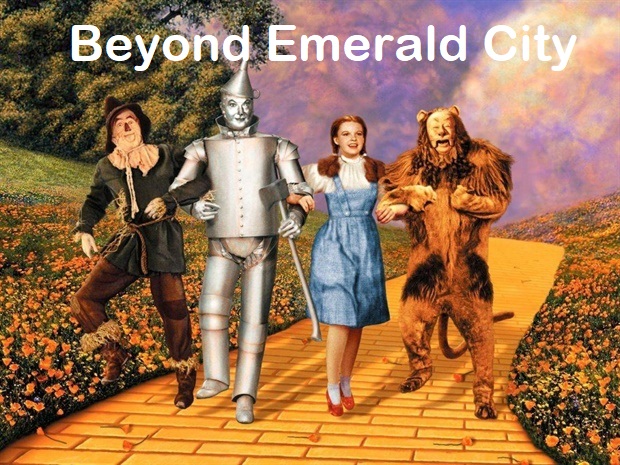
we would be able to create a world where we all could fulfill our wildest dreams.
Toward a Science of Human Behavior
 The world problems we all face at this time in history—such as the possibility of nuclear war, climate change, threats to democracy throughout the world, the covid-19 pandemic, the growing gap between the rich and the poor, racism and ethnocentrism—are staggering. They are all linked to personal problems, such as drug addiction and suicide, limited incomes, patterns of aggression, skyrocketing costs of medical care and education, and the basic question of how to live a truly meaningful life full of understanding, joy and personal fulfillment.
The world problems we all face at this time in history—such as the possibility of nuclear war, climate change, threats to democracy throughout the world, the covid-19 pandemic, the growing gap between the rich and the poor, racism and ethnocentrism—are staggering. They are all linked to personal problems, such as drug addiction and suicide, limited incomes, patterns of aggression, skyrocketing costs of medical care and education, and the basic question of how to live a truly meaningful life full of understanding, joy and personal fulfillment.
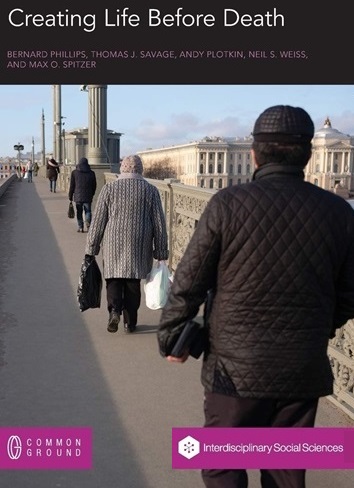 Far beyond my past publications is the recent book, Creating Life Before Death: Discover Your Amazing Self (2020),a work that was six years in the making with four co-authors: Tom Savage, Andy Plotkin, Neil Weiss and Max Spitzer. We see this book as an initial textbook for something new under the sun: a science of human behavior. The book centers on publications from the social sciences, yet it also includes research from the biological and physical sciences. It is unique in combining scholarship with human interest stories from the real world.
Far beyond my past publications is the recent book, Creating Life Before Death: Discover Your Amazing Self (2020),a work that was six years in the making with four co-authors: Tom Savage, Andy Plotkin, Neil Weiss and Max Spitzer. We see this book as an initial textbook for something new under the sun: a science of human behavior. The book centers on publications from the social sciences, yet it also includes research from the biological and physical sciences. It is unique in combining scholarship with human interest stories from the real world.Imagine that it is possible for all of to learn that interdisciplinary knowledge and,
as a result, gain access to our unbelievable powers.
Fulfilling One’s Extraordinary Potentials
We should remain aware that such learning opposes what we’ve been taught all our lives, and thus the habits which keep us imprisoned. As a result, we must replace those habits with new ones that open us up to who we and others are, and what is the actual nature of the world.
1. Physical Structures
 Interaction is the name of the game within our universe, for no part of the world can be isolated from any other part. As life evolved, organisms developed with ever greater interactive ability, capped by the human being.
Interaction is the name of the game within our universe, for no part of the world can be isolated from any other part. As life evolved, organisms developed with ever greater interactive ability, capped by the human being..
2. Biological Structures
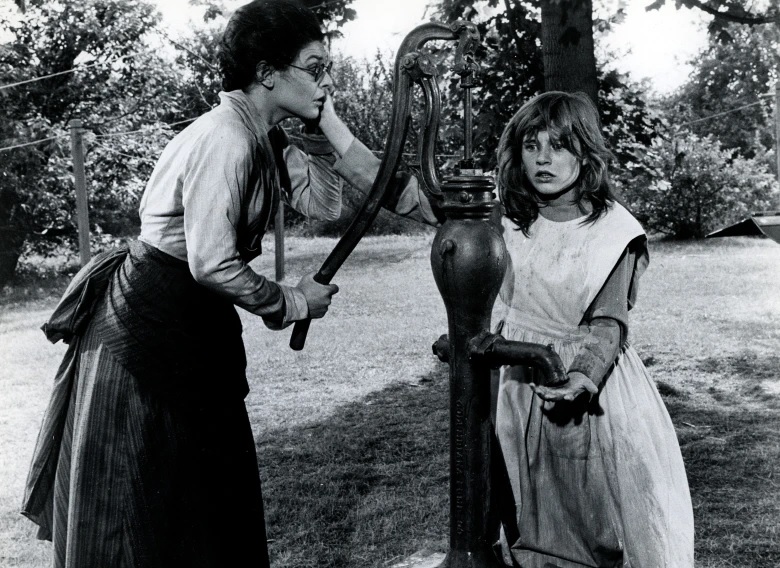 It is our biology which has given us the large brain in relation to body size along with anatomical features like the ability to make a wide variety of sounds that made possible the invention of language. And it is our complex languages which open us up to a gradational orientation, pointing us in the direction of continuing personal evolution.
It is our biology which has given us the large brain in relation to body size along with anatomical features like the ability to make a wide variety of sounds that made possible the invention of language. And it is our complex languages which open us up to a gradational orientation, pointing us in the direction of continuing personal evolution..
Helen Keller, blind and deaf at the age of 19 months, later wrote: “I knew then that ‘w-a-t-e-r’ meant that wonderful cool something that was flowing over my hand. That living word awakened my soul, gave it light, hope, set it free.”
..
 A historical example of the power of the idea of gradation is the rapid reconstruction of Japanese industry following World War II, which developed a culture of kaizen or continuous improvement. All employees no less than management were actively involved. Included in this approach was the use of the scientific method by workers and administrators, and not just professional scientists. As a result, Japanese products experienced a metamorphosis from cheap throwaways to goods of extremely high quality.
A historical example of the power of the idea of gradation is the rapid reconstruction of Japanese industry following World War II, which developed a culture of kaizen or continuous improvement. All employees no less than management were actively involved. Included in this approach was the use of the scientific method by workers and administrators, and not just professional scientists. As a result, Japanese products experienced a metamorphosis from cheap throwaways to goods of extremely high quality.John Dewey, the eminent philosopher and educator, recorded in his Reconstruction in Philosophy (1920/1948): “Democracy has many meanings, but if it has a moral meaning, it is found in resolving that the supreme test of all political institutions and industrial arrangements shall be the contribution they make to the all-around growth of every member of society.”
.
Reviewing our treatment of physical and biological structures, each of us can learn to fully utilize the incredible powers of THE SCIENTIFIC METHOD AND LANGUAGE.
3. Sociocultural Structures
 With respect to the former organizations, she saw a steep hierarchy. Those at the top are rewarded substantially more than those at lower levels. Further, she noted a minute division of labor in those groups. By contrast, she saw such features as rewards based on the effectiveness of one’s performance rather than the height of one’s position, suggesting a scientific pattern of behavior, in the latter organizations. Overall, what she discovered is a sharp contrast between organizations with limited interaction and those with substantial interaction.
With respect to the former organizations, she saw a steep hierarchy. Those at the top are rewarded substantially more than those at lower levels. Further, she noted a minute division of labor in those groups. By contrast, she saw such features as rewards based on the effectiveness of one’s performance rather than the height of one’s position, suggesting a scientific pattern of behavior, in the latter organizations. Overall, what she discovered is a sharp contrast between organizations with limited interaction and those with substantial interaction.Thus, bureaucracy is not the enemy so many of us have come to believe. Rather, it is the limited external interaction—or failure to use the scientific method—within a great many bureaucracies that is responsible for many of their limitations. And it is the general lack of internal interaction that limits even the best of bureaucracies. What we’ve learned above about increasing interaction among our emotions, intellect and actions points a direction for the further evolution of organizations. We need to move FROM A BUREAUCRATIC TOWARD AN INTERACTIVE or evolutionary way of life.
 Little did I know at the time that our conclusion of a lack of such interaction paralleled the insights of the Buddha some 2500 years ago. His First Noble Truth, which he saw as linked to the greatest problem of the human race, was the frustration or dukkha linked to our failure to fulfill our wants, or our aspirations-fulfillment gap.
Little did I know at the time that our conclusion of a lack of such interaction paralleled the insights of the Buddha some 2500 years ago. His First Noble Truth, which he saw as linked to the greatest problem of the human race, was the frustration or dukkha linked to our failure to fulfill our wants, or our aspirations-fulfillment gap.4. Individual Structures
 The above treatment of our physical, biological and sociocultural structures has provided a path that we can follow, one which we might see as the yellow brick road from the film, “The Wizard of Oz,” but now taking us beyond Emerald City. We have learned the existence of our incredible potentials for continuing personal evolution. How do we now actually enter the arena of continuing personal development and actually proceed to fulfill those possibilities?
The above treatment of our physical, biological and sociocultural structures has provided a path that we can follow, one which we might see as the yellow brick road from the film, “The Wizard of Oz,” but now taking us beyond Emerald City. We have learned the existence of our incredible potentials for continuing personal evolution. How do we now actually enter the arena of continuing personal development and actually proceed to fulfill those possibilities? The importance and possibility of the development of the three basic elements of the individual has been emphasized throughout history by people we look up to. With respect to “heart,” British Prime Minister Benjamin Disraeli wrote, “Man is only truly great when he acts from the passions.” The American poet Walt Whitman’s poetry includes this line: “I celebrate myself, and sing myself.” Ralph Waldo Emerson, the American philosopher and poet, wrote, “Nothing great was ever achieved without enthusiasm.”
The importance and possibility of the development of the three basic elements of the individual has been emphasized throughout history by people we look up to. With respect to “heart,” British Prime Minister Benjamin Disraeli wrote, “Man is only truly great when he acts from the passions.” The American poet Walt Whitman’s poetry includes this line: “I celebrate myself, and sing myself.” Ralph Waldo Emerson, the American philosopher and poet, wrote, “Nothing great was ever achieved without enthusiasm.”
 Concerning “hand,” here is a contribution from Francis Bacon, the English philosopher and essayist: “But men must know, that in this theatre of man’s life, it is reserved only for God and angels to be lookers on.” St. Matthew wrote, “By their fruits ye shall know them.” President Theodore Roosevelt wrote: “It is not the critic who counts; not the man who points out how the strong man stumbles, or where the doer of deeds could have done better. The credit belongs to the man who is actually in the arena.” And we have this from Winston Churchill, who rallied Great Britain during World War II in its darkest hour: “We shall not flag or fail. We shall go on to the end. We shall fight in France, we shall fight on the seas and oceans, we shall fight with growing confidence and growing strength in the air, we shall defend our island, whatever the cost may be. We shall fight on the beaches, we shall fight on the landing grounds, we shall fight in the fields and in the streets, we shall fight in the hills, we shall never surrender.”
Concerning “hand,” here is a contribution from Francis Bacon, the English philosopher and essayist: “But men must know, that in this theatre of man’s life, it is reserved only for God and angels to be lookers on.” St. Matthew wrote, “By their fruits ye shall know them.” President Theodore Roosevelt wrote: “It is not the critic who counts; not the man who points out how the strong man stumbles, or where the doer of deeds could have done better. The credit belongs to the man who is actually in the arena.” And we have this from Winston Churchill, who rallied Great Britain during World War II in its darkest hour: “We shall not flag or fail. We shall go on to the end. We shall fight in France, we shall fight on the seas and oceans, we shall fight with growing confidence and growing strength in the air, we shall defend our island, whatever the cost may be. We shall fight on the beaches, we shall fight on the landing grounds, we shall fight in the fields and in the streets, we shall fight in the hills, we shall never surrender.”The above analysis suggests this: a focus on the “HEART,” “HEAD” AND “HAND” of the individual–versus an outward orientation–is crucial for yielding personal and world development or evolution, which has no horizons.
From Limited Development toward an Increasingly Interactive Way of Life
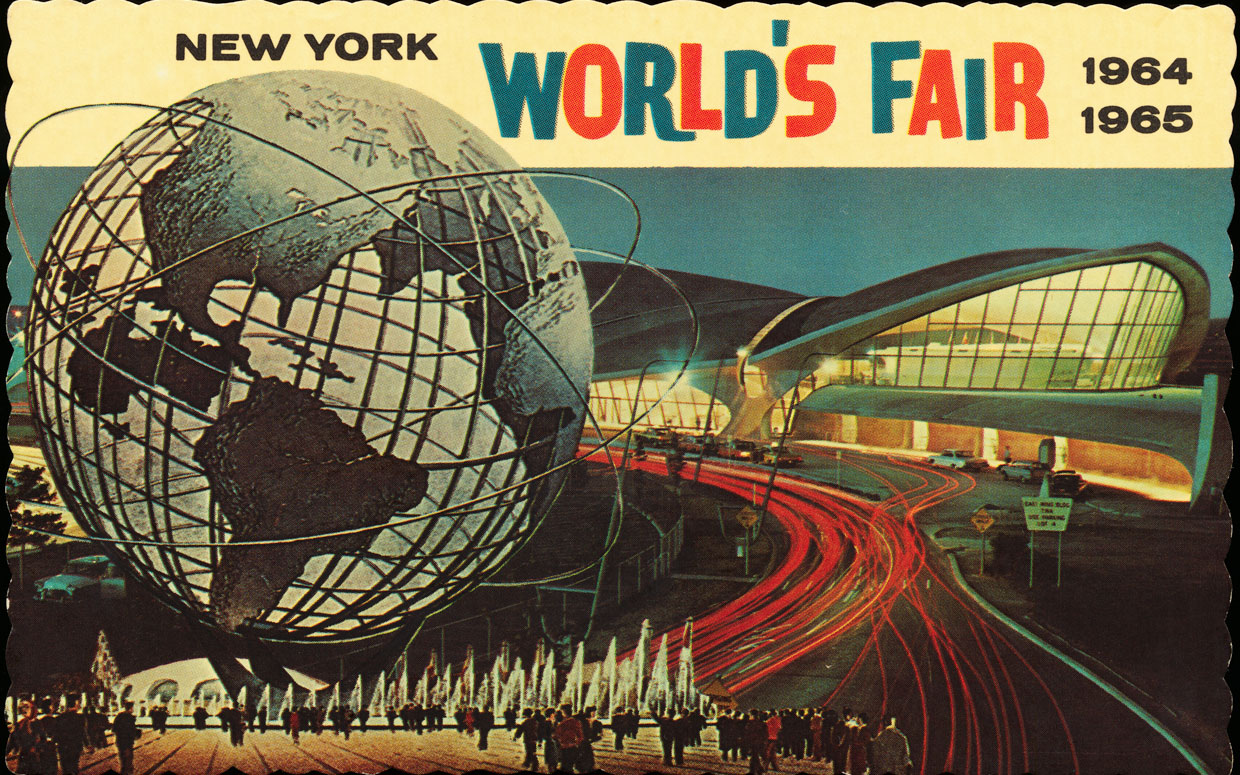 As a result, imagination takes us into worlds that are presently invisible, yet they continue to shape the visible present. The power over us of the twin invisible worlds of past and future was illustrated in our analysis of sociocultural structures. Recall the Buddha’s view that it is our unrealistically high aspirations that are the central problem of the human race. Remember Daniel Boorstin’s view that “We expect the contradictory and the impossible.” Think of John Berger’s analysis that advertising works to create a “fantasy world” for all of us to inhabit.
As a result, imagination takes us into worlds that are presently invisible, yet they continue to shape the visible present. The power over us of the twin invisible worlds of past and future was illustrated in our analysis of sociocultural structures. Recall the Buddha’s view that it is our unrealistically high aspirations that are the central problem of the human race. Remember Daniel Boorstin’s view that “We expect the contradictory and the impossible.” Think of John Berger’s analysis that advertising works to create a “fantasy world” for all of us to inhabit.As a result, We can EXTEND THE KAIZEN VISION from experiences at work to continuous improvement throughout one’s everyday life.
.
Instead of a world with a small number of winners and a very large number of losers, we would move toward societies, following Lewis Carroll, where “everyone has won, and all must have prizes.”
.
.
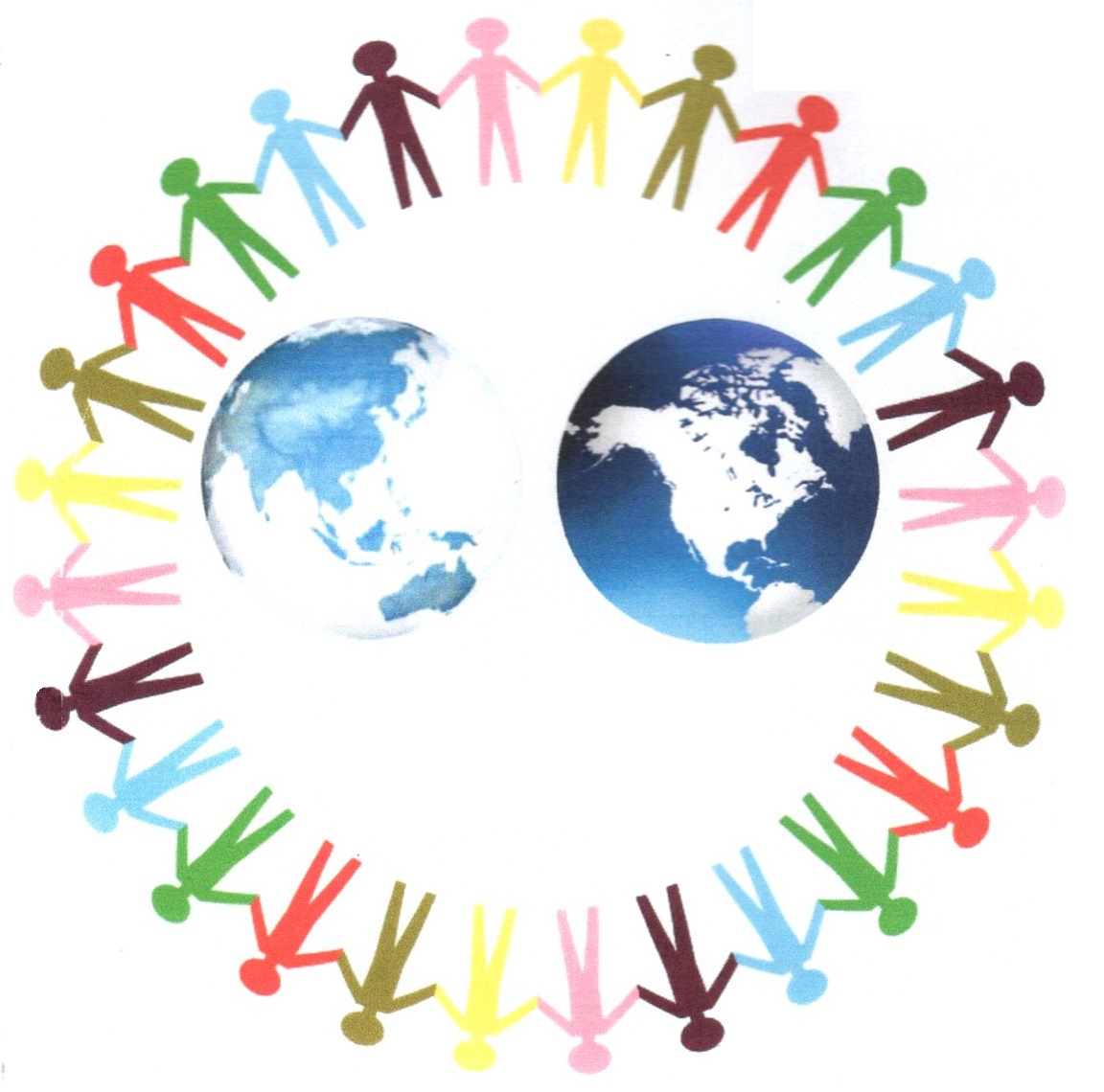
To actually move toward the ACTION required by our VISION of a new world, we must transform, one step at a time, old habits into new ones. .
We invite visitors to this website to help us further our own understanding of how to achieve human development. What are your own experiences of successes? Of failures? How do you assess this website? Creating Life Before Death? What suggestions do you have? What do you think of the idea of an PERSONAL LIBERATION MOVEMENT for helping us to address personal and world problems? What is your own vision of next steps in human evolution, and view of how to confront present-day problems?
Bernie Phillips
I have never forgotten the value of that personal experience. His impact has continued throughout my entire life. Following graduation, advanced degrees, research at the University of North Carolina and teaching at the University of Illinois, I enjoyed thirty-seven years at Boston University teaching a variety of courses in sociology. After publishing a number of books and articles, I founded “The Sociological Imagination Group.” This involved scholars in sociology who shared their research at annual meetings stressing an interdisciplinary approach to knowledge of human behavior.
Retiring in Sarasota, Florida, I found myself in front of a Barnes & Noble bookstore, where I met Tom Savage. In pleasant conversation we discovered we had both been at Boston University in the early 1960s. I was teaching sociology in the College of Liberal Arts, while at the same time next door Tom was attending seminary at the School of Theology. Recognizing that a Scholar and a Preacher bring unique perspectives to any investigation about the meaning and significance of life, we decided to collaborate, writing Creating Life Before Death: Discover Your Amazing Self. My former student, Andy Plotkin, and two friends, Neal Weiss and Max Spitzer, who had worked with me previously, added their voices to broaden the appeal of our message
To put mere words into action, Tom and I created a seminar for Plymouth Harbor, a retirement community in Sarasota. The interaction among the participants brought to life personal experiences contrasting with my earlier academic exchanges. Now, Tom, I and our co-authors have raised the idea that we are facing two crises in the modern world. The first is to recognize how a bureaucratic viewpoint and way of life has compromised individual creativity and freedom. The second is a world failing to address problems threatening our future existence.
Expanding into the development of an organization, a seminar and a website, our focus now is on the development of a PERSONAL AND WORLD EVOLUTIONARY MOVEMENT, dedicated to nothing less than changing our bureaucratic societies into evolutionary societies. Our focus differs from that of other movements that also point in a democratic direction. For we see every individual as possessing incredible yet largely untapped potentials for personal development that education has failed to unlock. Our optimism is based on the conviction that interdisciplinary social science knowledge can help the individual transform capacities into abilities that will change the world.

When I Begin the Ancient Game of Chess
by Bernard Phillips
When I begin the ancient game of chess,
Commanding knights and pawns in bitter strife,
I wonder at the thought that I possess:
How is it with the greater game of life?
Am I a wooden piece which someone moves,
A means to satisfy another’s ends?
Do I advance, retreat, in patterned grooves,
A creature of commands another sends?
Perhaps I am a player in the game,
And force the moves of countless other souls
To seek my own fulfillment, fortune, fame,
Ignoring in my quest their secret goals.
The castle falls, the knights remain en pris [exposed],
Besiegers there are none the eye can see.
Different: A Voice of the Atomic Age, 8, 2, Summer, 1954, 18.
Tom Savage
Tom’s unique background combines 25 years as a minister and 23 years with the Sarasota, Florida, Sheriff’s Department, where he retired as a lieutenant. He served churches in Belmont, Massachusetts, where he was ordained, and in Elgin, Illinois, Madison, Wisconsin, and Sarasota, Florida. Moving from pulpit to patrol car, the robe and badge provided experiences granted very few of us. They have yielded numerous stories found in this book.
Attempting to rise above the biased cultural contamination of one’s own personal experiences in his native land, Tom has traveled to over eighty-nine countries, studying local traditions and beliefs. The goal he sought was an appreciation of unity within diversity, while championing individuality in community.
Tom sees art as history’s mirror, both reflecting and helping to interpret our human condition. Throughout the ages, art has been represented by a variety styles. These styles merely indicate an artist’s unique way for seeing our world. Our imaginations are expanded as their visions are presented to us in paintings, sculptures and crafts. Tom views the physical and social sciences as feeding the head, with art, architecture and music emotionally touching the heart
Tom was deeply moved by a writer who saw each of us being “tossed into the world.” The implications of that image were quite profound. Time, Place, and Condition are the realities we all face. For Time, what would one’s life be to have been “tossed into the world” in the first or fifteenth century, versus our own twenty-first century? For Place, how would we have turned out having been “tossed” into China, India, Arabia, or the Middle East? How would the cultural contamination of these areas have shaped our views on politics, religion, values and behavior? For Condition, the list is endless! Are you white, black, or brown in color? Male or female? Rich or poor? Free or slave? All of this determines how we see ourselves, our neighbors, and the world.
Tom holds a B.A. from the University of Redlands, California, and a Master of Divinity and Master of Sacred Theology Degree from the Boston University School of Theology. He created a unique experiment in community policing with over ten thousand volunteers for a citizen patrol. He has served as the founder of the Sarasota Public Arts Fund, on the Ringling College Scholarship Committee, and is a significant donor for philanthropic causes in the area.
A River of Time flows into an Ocean of Life creating our human condition. So many people out there in our world with differing ideas, beliefs, and values. Is it any wonder that others will not like us simply because they are not like us?
Tom enjoyed portraying himself to the public in three distinctive roles: cop, cowboy, and clergyman. There was, of course, a brief motorcycler, biker, “Captain America” period, when he made the obli gatory cross-country road trip from Florida to California.
But then, each of us has a story to share. Here you reveal your values, and at some point you pause to ask yourself what life is really all about.
Over the years you finally realized you were wiser than you thought, stronger than you recognized, and braver than you felt. In life, your voice and vote will count!
Don’t just sit in the bleachers, watching others play the game of life. Those active on the field will end up making all the rules you will later be forced to obey.
“Shop until you drop” says “to be is to have.” Gambling is just another form of escape. Neither activity will make you a true winner. With growth and change as the only inevitable realities in life, we must rise to meet the challenges they present.
Caught between a vanished past and an unknown future, let’s celebrate a joyful and creative life before our death.
READER – How do you FEEL about the IDEAS suggested in my poem, “THE LEAF”?
The Leaf
by Tom Savage
 Here am I. Once supple, smooth, alive Now rigid, coarse, dying. Soon to drift quietly to the ground where expectant seedlings Greedily await my life-giving death. Those gentle breezes who Yesterday fondly caressed me. Now would rip me. From my mother’s limbs, sending me. Tumbling down to be trodden under foot. Raked, piled, leaped upon in childhood’s delight. Gathered and burned. The wind will aid a few in escape. But all such evasion an illusion. For the decree is quite simple: New leaves from old. Now, it is my turn. Behold, I am coming. Let all the earth rejoice.
Here am I. Once supple, smooth, alive Now rigid, coarse, dying. Soon to drift quietly to the ground where expectant seedlings Greedily await my life-giving death. Those gentle breezes who Yesterday fondly caressed me. Now would rip me. From my mother’s limbs, sending me. Tumbling down to be trodden under foot. Raked, piled, leaped upon in childhood’s delight. Gathered and burned. The wind will aid a few in escape. But all such evasion an illusion. For the decree is quite simple: New leaves from old. Now, it is my turn. Behold, I am coming. Let all the earth rejoice.
Andy Plotkin
For someone who would eventually teach courses ranging from the sociology of developing countries and family and society, I had the perfect parents to prepare me for an interdisciplinary life. My father was a world-class track star and a physics major at Harvard. He then became the president of his father’s clothing store in Boston. My mother was a renowned artist who realized that to be human is a proud achievement.
My crowning achievements have been my steadfast marriage to my graduate school sweetheart, and the upbringing of our two fabulous children. Next to these achievements, I am hoping to contribute to the mitigation of the two major interrelated worldwide crises of our era: creating more meaningful personal lives, and taking steps toward solving the world’s most pressing social problems, ranging from bullying, racism (and all the other isms), poverty (and all other forms of inequality), terrorism, environmental degradation, and war.



